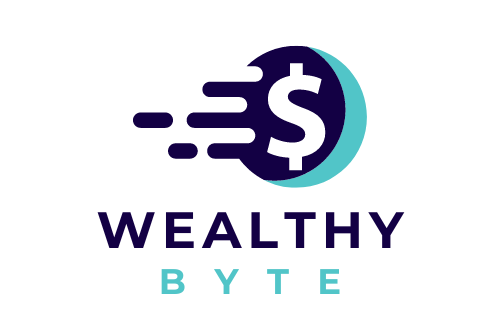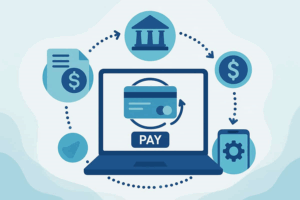
Ever wondered why you can write off those business loan payments on your taxes? It’s interesting, and if you’re running a business, it’s something you’ll definitely want to understand. Let’s break it down.
The World of Business Loan Tax Deductions
Look, we all know that taking out a business loan means adding debt to your plate – not exactly anyone’s idea of fun. But here’s the silver lining: certain parts of your loan repayments can actually help reduce your tax bill. Pretty sweet, right?
Let’s dig into why this works and how you can make it work for you.
What’s a Business Loan, Anyway?
Think of an instant business loan as your company’s financial helping hand. You may need cash to expand your store, buy new equipment, or keep things running smoothly during slow seasons. These loans come in two flavors: secured (where you put up something valuable as collateral) or unsecured (where you don’t). Simple enough, right?
Breaking Down Your Loan Payments
Here’s where things get interesting. When you make your monthly loan payment, it’s actually split into two parts:
- The principal (that’s the money you originally borrowed)
- The interest (basically, the fee you’re paying the lender for using their money)
Here’s the cool part: while you can’t deduct the principal payments (sorry!), you can definitely deduct that interest. And trust me, this can make a huge difference in your tax bill.
Why Can You Deduct the Interest?
Think about it this way: when you’re paying interest on a business loan, you’re essentially paying for the privilege of using someone else’s money to run your business.
It’s just like paying rent for your store or salaries to your employees – it’s a cost of doing business. The folks at the tax office get this, which is why they let you deduct it.
What Parts of Your Loan Can You Actually Write Off?
I know what you’re thinking – “Just tell me what I can deduct!” Well, different types of loans have different rules, so let’s break this down into bite-sized pieces.
- Regular Term Loans
You know those standard business loans where you borrow a fixed amount and pay it back over time? Here’s the deal:
- Can deduct: All that interest you’re paying each month
- Can’t deduct: The principal (that’s just you paying back what you borrowed)
- Business Lines of Credit
Think of these as your business’s credit card – you’ve got a credit limit, and you only pay interest on what you use.
- Can deduct: Interest on whatever amount you’ve actually used
- Can’t deduct: Those annoying fees for unused credit or when you’re late on payments (we’ve all been there!)
- Credit Card Interest
Yes, your business credit card counts too! But here’s the catch:
- Can deduct: Interest on all those business purchases
- Can’t deduct: Any interest from that time you accidentally used the business card for personal stuff (we know it happens!)
- Equipment or Real Estate Loans
These are the big ones – maybe you’re buying a new warehouse or that fancy piece of machinery.
- Can deduct: The interest portion of your payments
- Can’t deduct: Things like your down payment or the actual cost of the property
- Directors’ Loans
This one’s tricky – especially if you’re borrowing from your own business. Let’s try to understand what director’s loan is:
- Can deduct: Interest when it’s genuinely for business purposes
- Can’t deduct: Personal expenses (the tax folks are pretty strict about this one)
Making Those Deductions Work for You
Now, let’s talk about how to actually claim these deductions without giving yourself a headache or raising any red flags with the IRS.
Keep Those Records Clean
Look, I know paperwork isn’t fun, but trust me on this one – you’ll want to:
- Hold onto those loan agreements (don’t just stuff them in a drawer!)
- Keep your payment schedules handy
- Save those bank statements
- Track exactly how you’re using that loan money
- Keep Business and Personal Stuff Separate
This is super important, folks. Please, please, please:
- Get a separate business bank account if you haven’t already
- Don’t use that business loan to buy personal stuff (even if it’s tempting)
- If you do mix things up (hey, we’re human), try these damage control steps:
- Create a detailed spreadsheet tracking which expenses were personal vs. business
- Keep all receipts and label them clearly
- Document the percentage split if an expense serves both purposes
- Consider consulting with your accountant to properly allocate mixed expenses
- Set up a reimbursement system if you accidentally use business funds for personal items
Remember, the IRS loves clear paper trails, and your future self will thank you for being organized!
- Figure Out Your Interest Numbers
Let’s get real about those monthly payments. Say you’re paying $1,000 each month – some of that is principal, some is interest. But only the interest part counts for tax deductions. Here’s how to handle it:
- Get that amortization schedule from your lender
- Keep a monthly tracking sheet of interest paid
- Use accounting software to categorize payments properly
- Save those year-end loan statements (they’re gold when tax time comes!)
- Tax Time Tips
When it’s time to file those taxes (everyone’s favorite time of year… not!), here’s where you’ll report everything:
- Got a corporation? Form 1120 is your friend – look for that “business expenses” section
- Running things as a sole proprietor? Schedule C is where it’s at
- Part of a partnership or LLC? You’ve got your own special spots for this too
The Sweet Benefits You Don’t Want to Miss
Let me show you why these deductions are actually pretty awesome.
- Saving Money on Borrowing
Let’s break this down with some real numbers. Say you’re paying $15,000 in interest this year, and you’re in the 25% tax bracket. Here’s the magic:
- Total interest paid: $15,000
- Tax bracket: 25%
- Tax savings: $3,750 (that’s real money back in your pocket!)
- Real cost of borrowing drops to $11,250
- Better Cash Flow (Who Doesn’t Want That?)
Think about it – all that money you’re saving on taxes? That’s extra cash in your pocket that you can use for:
- Growing your business
- Catching up on bills
- Maybe finally getting that new equipment you’ve been eyeing
- Hiring seasonal help when you need it
- Investing in marketing or advertising
- Building up your emergency fund (because we all know how important that is!)
- Smart Borrowing Makes Sense
Here’s the thing – knowing you can deduct that interest makes borrowing for your business way more attractive. Just make sure you’re:
- Borrowing for things that’ll generate revenue
- Using loans strategically for growth opportunities
- Planning your tax deductions as part of your overall financial strategy
Real-Life Examples (Because Theory Is Boring)
Let me show you how this works in the real world:
Story Time 1: The Equipment Upgrade
Meet Sarah (she owns a printing shop). She took out a $100,000 loan to buy a fancy new printer.
- Loan amount: $100,000
- Annual interest rate: 8%
- Annual interest paid: $8,000
- Business income: $70,000
- New taxable income: $62,000 (after deducting interest)
- Tax savings at 25% rate: $2,000
Sarah’s basically getting paid to upgrade her equipment. Smart cookie!
Story Time 2: The Seasonal Struggle
Then there’s Mike’s retail store. Here’s his story:
- Uses a $50,000 line of credit for holiday inventory
- Pays $4,500 in interest over the year
- Full $4,500 is deductible (used 100% for inventory)
- Results in significant tax savings
- Helps manage seasonal cash flow like a pro
Watch Out For These Gotchas!
Look, nobody’s perfect, and sometimes we make mistakes. Here are some big ones you’ll want to avoid:
- The Personal/Business Mix-Up
This is where folks often trip up:
- Keep separate credit cards for business and personal use
- Don’t “borrow” from business accounts for personal expenses
- If you must mix, document everything meticulously
- Consider setting up automatic transfers to keep things clean
- Review transactions weekly to catch any crossover
- Following the Rules
Not everything with interest can be deducted:
- Late payment fees? Nope
- Penalties? Sorry, not those either
- Interest on personal purchases? No way
- Tax payment interest? That’s a no-go
- Loan origination fees? These need special treatment
- Math Mistakes
Common errors to avoid:
- Don’t deduct the entire payment amount
- Watch those calculator digits
- Double-check your decimal points
- Keep monthly totals for easier year-end calculations
- Consider using accounting software to reduce errors
- The Paper Trail
Your documentation checklist:
- Loan agreements and contracts
- Monthly statements
- Proof of payment
- How you used the funds
- Business purpose documentation
- Receipts for purchases made with loan money
The Bottom Line (Let’s Wrap This Up!)
Look, I know we’ve covered a ton of ground here, but here’s what it all boils down to:
Key Takeaways
Think of these as your golden rules:
- Interest deductions = free money (well, kind of!)
- Documentation is your best friend
- Keep it legit, keep it business
- When in doubt, ask a pro
What This Means for Your Business
Being smart about your loan deductions can:
- Make borrowing more affordable
- Improve your cash flow
- Help your business grow
- Keep the tax folks happy
- Give you better financial flexibility
Final Words of Wisdom
Here’s the real talk:
- Don’t let tax deductions be the only reason you take out a loan
- Borrow smart, deduct smarter
- Stay organized from day one
- Build a relationship with a good accountant
- Review your loan strategy annually
Your Next Steps
Ready to make this work for you? Here’s what to do next:
1. Review your current business loans
2. Set up a proper tracking system
3. Talk to your accountant
4. Plan your future borrowing strategically
5. Keep this guide handy (bookmark it, maybe?)
Conclusion
Remember, every business is different, and tax laws can change faster than a cat video goes viral. If you’re feeling overwhelmed (totally normal, by the way), there’s no shame in getting professional help. Think of it this way – the money you spend on good advice usually pays for itself in tax savings and peace of mind.
And hey, if you’ve read this far, you’re already ahead of most business owners when it comes to understanding loan deductions. Pat yourself on the back – you’re doing the work to make your business better!
Now go forth and make those deductions count! 💪
Remember: This guide is meant to be helpful, but tax situations can be complex. Always consult with a qualified tax professional for advice specific to your situation.

















